The Nikon Coolpix P7700 is a behemoth. It's huge, it's bulky and it's intimidating. But it is so deliciously feature packed that we can't seem to let go of this camera. We love the P7700 and given its price, it's probably the best camera for anyone looking to experiment with photography without having to invest in thousands more for a DSLR. Extensive manual controls, RAW shooting, great image quality and a fast aperture lens make this camera quite a desirable piece of equipment we'd love to include in our camera bag.
The Coolpix P7700 is Nikon’s refinement of the older models, the P7100 and P7000. It swaps out the 10 megapixel CCD sensor for a 1/1.7” BSI-CMOS sensor and while the focal length remains the same, Nikon has improved the aperture range, bringing it down to f/2.0-4.0. There’s also second generation Vibration Reduction built into the lens that is supposed to allow 4 stops worth of hand holding. We’ve spent a lot of time with this gorgeous hung of black craftsmanship and we’re quite eager to share our thoughts with you, so here they are.
Build and Ergonomics:
Black beast is probably the most appropriate way to describe this gorgeous hunk of craftsmanship. The minute you lift the camera into your hands, you will feel the sturdy build. The camera weights almost 400 grams, which is quite a lot for most point and shoots, but not something new for this category. This camera looks and feels like it can take abuse (and it really can. We tried.), with the lens being the only vulnerable entity on this otherwise camera that could very well be a tank. To fix the issue, Nikon supplies a lens cap, but unfortunately no tether to keep it affixed to the camera. We’re not sure if this is a problem that we can easily overlook as a scratched front element, or worse, a cracked one, could essentially render the camera useless. Good news is, the Nikon Coolpix P7700 does have a filter thread at the front of the lens and therefore, a UV filter could be attached in order to protect it.
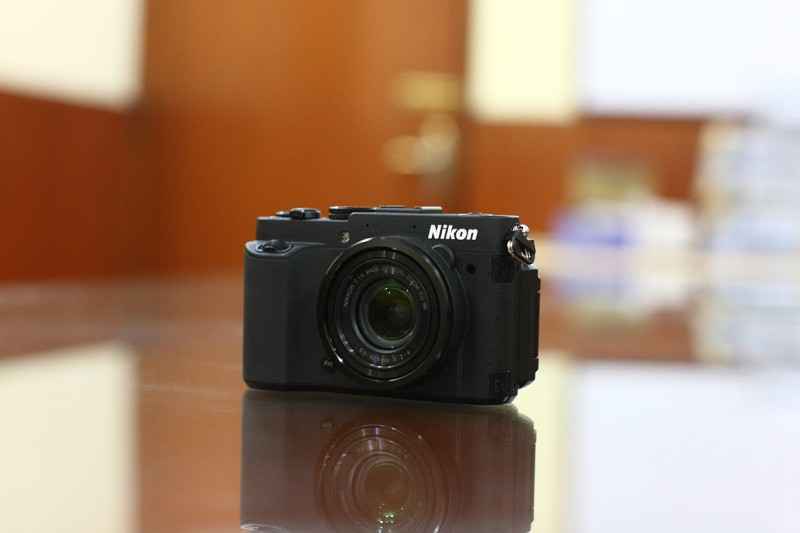 |
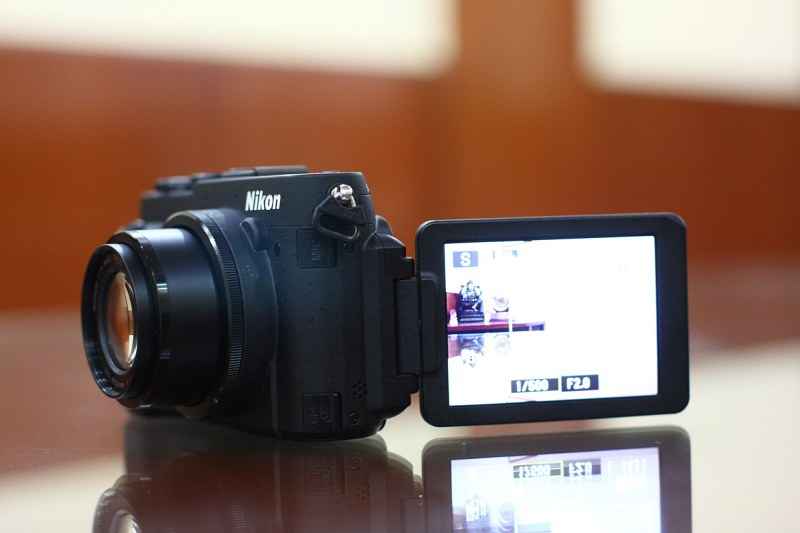 |
A solid build is easy to achieve. Just make the whole thing out of metal and you should be good, but the trade-offs generally are ergonomics. The story of the Coolpix P7700 is only somewhat different. The camera has a very nice deep-grooved handgrip that would be comfortable for almost any size of hands (unless you’re a giant). What we like about this camera in particular is the large number of dials. Yes, we may have a borderline dial fetish, but the P7700 actually does a good job of putting ALL the controls at your fingertips. There is a primary dial on the front grip placed where your index finger would naturally go. There is another horizontal dial at the back right next to where the thumb would sit, making the manual operation of this camera a piece of a very, very delicious cake. Along with these two dials and a mode dial, there is a secondary dial on the top-left of the camera that gives quick access to options such as ISO, White Balance settings, Bracketing, Image Quality etc. In all our use of the P7700, we only needed to enter the dreaded Nikon menu once, and that was to see what the menu actually contained.
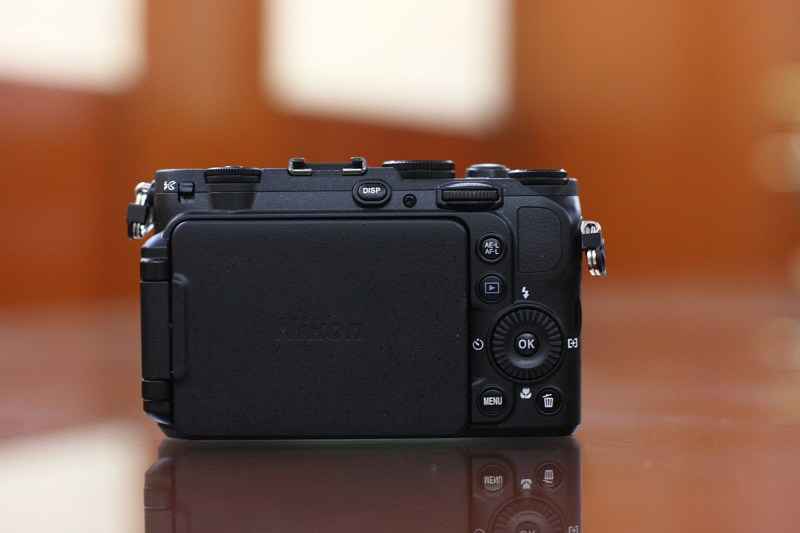 |
 |
Along with the many dials, we found two “fn” buttons on the camera, which can be configured from within the menu to perform custom functions like switching between AF modes, switching Image settings etc. Each fn button can be associated with three other buttons to give quick access to a total of 6 features, eliminating the need to ever go into the menu.
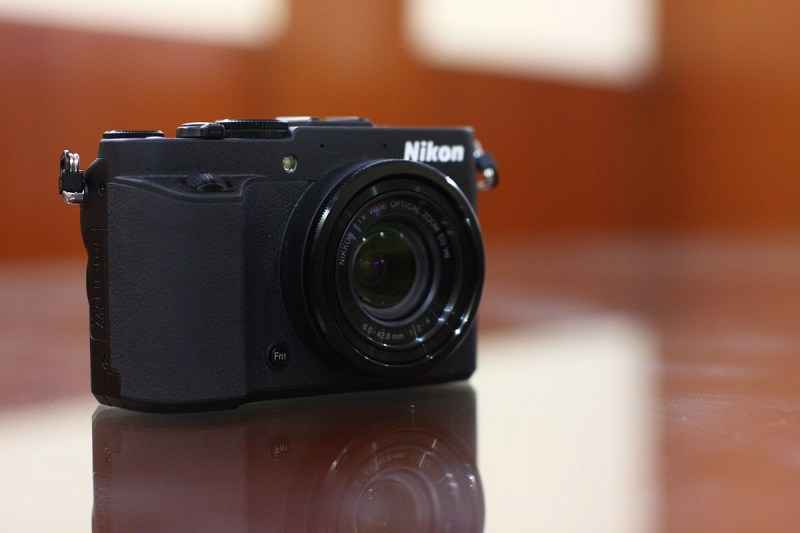 |
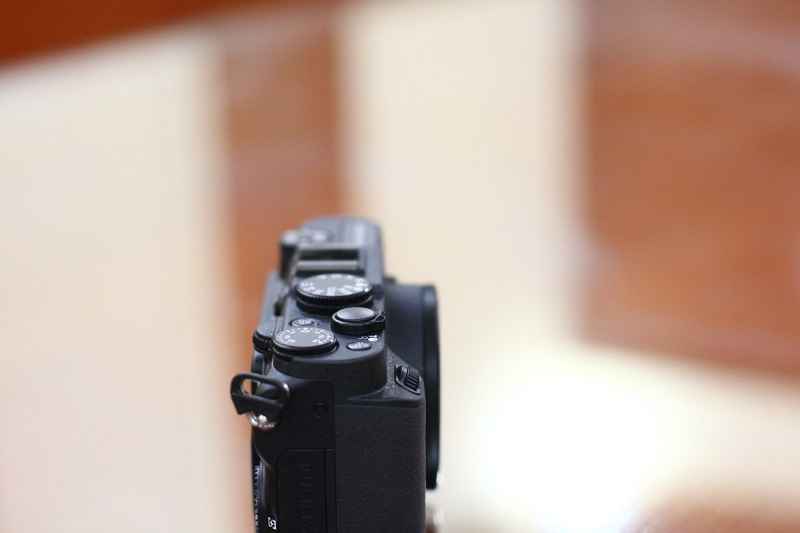 |
Finally on the left we’ve got a tiny little switch to raise the flash. The switch is well sized, big enough to never get missed and small enough to never be obtrusive. It’s quite rare to find something on a camera that is just so perfect. The back has the usual host of buttons along with a jog dial that doubles up as more buttons to control more features. All in all, the Coolpix P7700 puts every form of control you may need right at your finger (or thumb) tips, without making the whole package seem too overwhelming. Yes, if this is your first advanced point and shoot camera and you lack the experience of using high end imaging machines, then we strongly suggest you get cozy by the fire with the user manual, which we promise you is an excellent cheat sheet to getting to know your camera.
 |
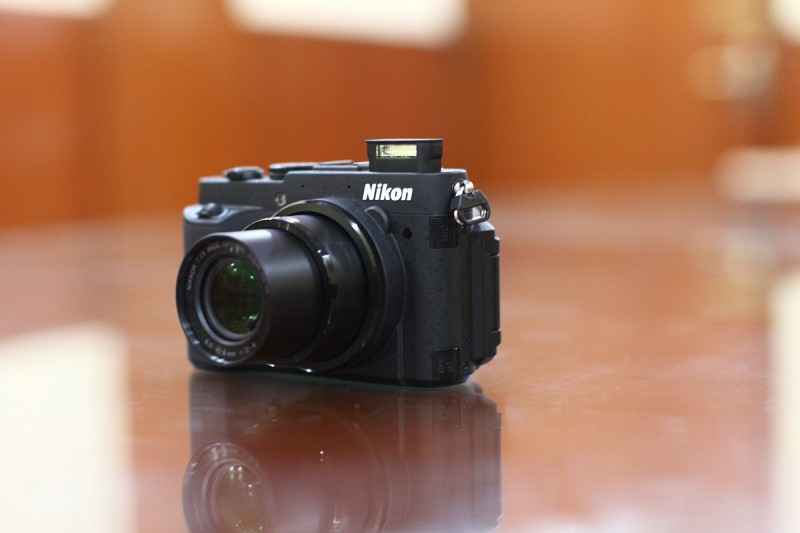 |
All in all, the ergonomics and build of this camera scream professional. For first timers, the P7700 might seem a little intimidating, but in all honesty, it’s just a sheep in a wolf’s skin. It might look like a scary block of dials and switches and buttons, but in reality, each of those dials, switches and buttons does exactly what it’s supposed to.
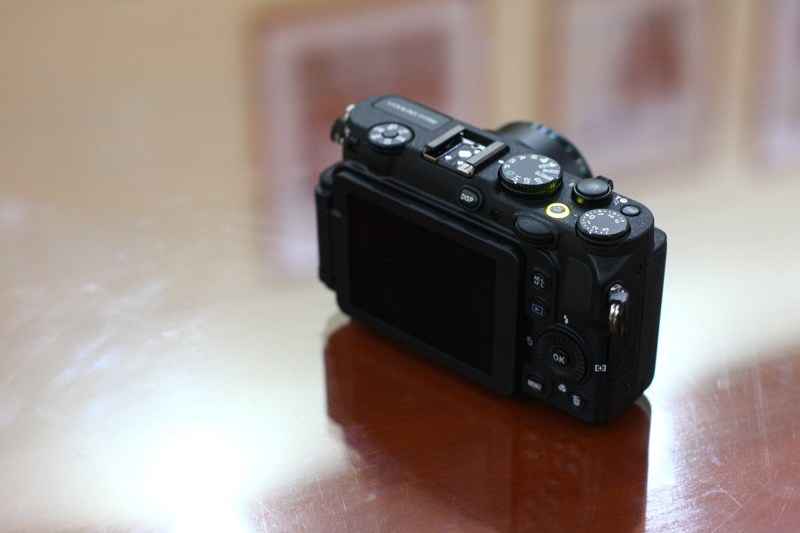 |
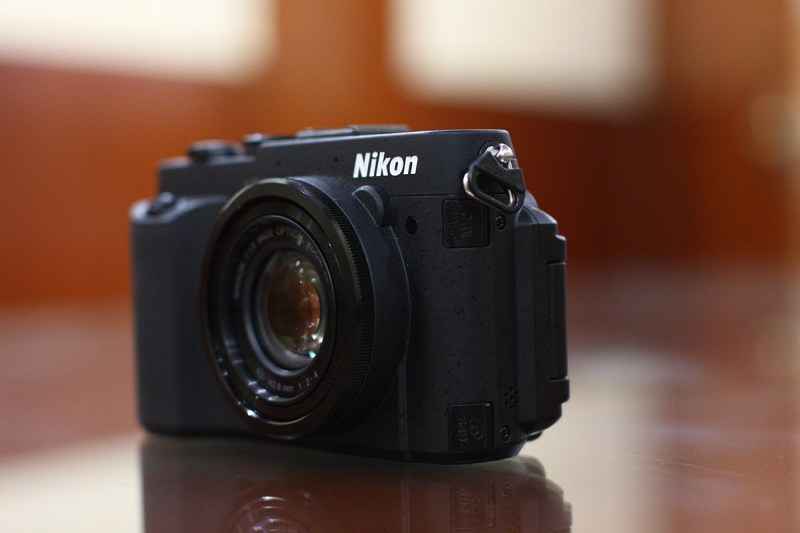 |
Visit page two, to keep reading about the Nikon Coolpix P7700's Features, Image Quality, and Verdict…
Features
The Nikon P7700 features a 12 megapixel 1/1.7” Back-Side Illuminated CMOS sensor. Its predecessor, the P7000 used a 10 megapixel power hungry CCD imaging chip. This is an excellent switch on Nikon’s part as the newer BSI sensors have shown to be not only less power hungry, but also very good at keeping noise levels low when compared to the CCD type sensors.
The other major plus is in the optics arena. The P7000 sported a 28-200mm f/2.8-5.6 lens, which is every respect of the spec sheet can be regarded as a “slow” lens. But that was 2010 and a within a year, Nikon ironed out a lot of the kinks. For starters, the lens has received the same optical coatings as those found on Nikon’s pro-grade lenses. Secondly, even though the focal length remains the same, the lens on the P7700 has a fast aperture range of f/2.0-4.0. While the wide end might not have seen a huge boost, the aperture on the telephoto end gains one whole f-stop worth of light, which is pretty significant at the 200mm end.
We’ve already raved on and on about the dials, so we’re going to leave that out of this section. What we will talk about though is the fully articulated 3-inch screen with a resolution of 921K dots. We found the screen to maintain decent visibility even under the bright sun, but if you’re shooting that’s something highlight heavy, you might want to find some shade to examine your image.
Another thing we liked about the P7700’s screen is that it doesn’t make the image look better than it actually is. We’ve often noticed that when we shoot with the newer cameras with these awesome screens, our images look mind-blowing on the back, but when reviewing the same images on the computer, they don’t nearly look as good. No such issue with the P7700, which means less disappointment for you when you look at your images on a screen.
The Nikon Coolpix P7700 has the usual slew of features that one would expect from a camera of this tier. It’s got a blazing fast 8fps burst speed along with the ability to shoot in RAW and AF tracking for moving subjects. It also shoots video in the stipulated 1920×1080 pixels resolution at 15 and 30 frames per second, with the 720p HD resolution getting the ability to record at 60fps, something that might seem attractive to those looking to experiment with slow motion video.
Lastly, we noticed that the P7700 has a setting for the zoom feature. It allows the user to select between regular zoom speeds (which is pretty fast) or switch to a silent zoom. The silent zoom we’re assuming is mostly geared for those who would be shooting video with the P7700. When we used the camera is silent zoom mode, the zooming was slow, but absolutely silent. The obvious tradeoff is speed, but if you’re filming a play or a recital, the lack of sound from the zooming of the lens can be quite a desirable thing.
The P7700 is incredibly feature packed, probably why it’s such a bulky camera. But is the size a worthy enough tradeoff for performance?
Image Quality
The sensor on the Coolpix P7700 is of the bigger-than-normal Back-Side Illuminated kind, which gives this camera a slight advantage over the other point and shoot cameras. The combination of slightly more silicon real estate combines with a brighter lens does indeed allow the camera to spit our images with a rather amazing quality to them.
-small.jpg) |
-small.jpg) |
-small.jpg) |
For starters, we noticed that the lens is visibly sharp in the center even at f/2.0, though as we moved towards the edges, the sharpness dipped a little. Sharpness definitely goes up when the lens is stopped down to about f/2.8, with f/4 yielding exceptional quality on both the center and the edges of the frame. The lens in fact manages to maintain sharpness even at the most telephoto end, something that’s quite rare in a point and shoot. Photos taken at the telephoto end generally end up looking bad either due to camera shake or simply because the optics just aren’t good enough to maintain sharpness. The lens on the P700 incorporates a very effective in-lens stabilization system (Vibration Reduction), which allows hand-holding up to 2 stops (real world use) and the lens is quite sharp even at the 200mm end at f/4.0.
-small.jpg) |
-small.jpg) |
-small.jpg) |
For our Nikon Coolpix P7700 review, we shot all images in RAW and converted them using standard profile in Adobe Lightroom 4.2 (4.3 was not out at the time we reviewed the camera). The RAW files showed about 1 stop worth of room for adjusting RAW files, meaning that if you over-exposed by a stop, chances are you could still end up with a useable image. The BSI sensor also works well when it comes to under-exposed images, as we managed to recover a slightly underexposed image (about a stop of underexposure) without any problems.
-small.jpg) |
-small.jpg) |
-small.jpg) |
When shooting JPG, the files carry a signature Nikon look, with well saturated colors and a strong emphasis on the colour green and a warm white balance. If you’re a novice, you might shoot in JPG and love the images that come straight out of the camera, but the one area we noticed the P7700 falter was in the dynamic range arena. Despite the sensor being just slightly bigger than a regular point and shoot camera sensor and being of the BSI kind, the dynamic range on the P7700 isn’t noticeably greater than that of a regular point and shoot. However, if you’re even lightly versed with Photoshop or Lightroom and have been shooting in RAW, working around the lack of dynamic range can be a cakewalk.
-small.jpg) |
-small.jpg) |
-small.jpg) |
While being able to render gorgeous files is one part of the equation, being able to lock focus is another. The P7700 impressed us with rather quick focusing, whether it was for macro shooting or shooting the far lying mountains of Manali. The only situation we hit a snag was when we tried to shoot in pitch darkness, where even the AF assist lamp failed to lock onto our subject (who was positioned so that they would be in the center of the frame). Bottom-line in, as long as you keep the minimum focusing distance of the lens in mind, the camera should be fairly accurate and quick in locking focus on your intended subject. Although, we would advise against expecting any creamy bokeh shots due to the relatively tiny sensor.
The video on the Coolpix P7700 is just as good as its imaging counterpart. Even in auto mode, the exposures are extremely well balanced, with little to no bias for the highlights or shadows. Of course, this changes when the scene is either highlight heavy or shadow heavy, so we advise dialing in the adequate amount of exposure compensation from its dedicated dial on top.
While the images on the P700 look stunning and all, we realize that our comparison of the images was only with images from other point and shoot cameras. When we started comparing the P7700’s product to the files that come out of the Sony DSC-RX100 or other similar camera, we realize that the P7700’s sensor does cause the overall performance to falter. Even at 1/1.7 inches, the sensor inside the P7700 is the second smallest sensor in the camera segment, which is sort of a kick to the groin. We can’t help but wonder how great this camera would have been had Nikon decided to stick the V1’s 1-inch sensor into this otherwise feature-packed camera. Maybe we will find out sometime in the future!
Conclusion
The Nikon Coolpix P7700 is a great camera and for the price of Rs. 24,950, we feel that it is a steal. Sure it doesn’t have the crazy telephoto range that you might get from the Sony HX20V or other superzoom type cameras, but what you get in return is DSLR caliber lens with an impressive aperture range of f/2.0-4.0. The P7700 truly puts all the controls at your fingertips with all the dials and buttons it has on the surface with the tradeoff being that this is not a camera that will fit in your pocket. However, Nikon does supply a very high quality camera strap with the P7700, so you can sling it around your neck, leaving room in your pocket for other things like memory cards and cellphones and what not.
However, like we mentioned, even though the images out of this camera are great, the small sensor does limit the dynamic range that the camera can capture. When we consider the fact that the P7700 is an advanced point and shoot, and therefore pit it against other cameras in that category, we feel that the small 1.1/7” sensor really does hold this otherwise power horse of a camera back.
Regardless, we love the P7700 and given its price, it’s probably the best camera for anyone looking to experiment with photography without having to invest in thousands more for a DSLR. Extensive manual controls, RAW shooting, great image quality and a fast aperture lens make this camera quite a desirable piece of equipment we’d love to include in our camera bag.
Swapnil Mathur
Swapnil was Digit's resident camera nerd, (un)official product photographer and the Reviews Editor. Swapnil has moved-on to newer challenges. For any communication related to his stories, please mail us using the email id given here. View Full Profile
